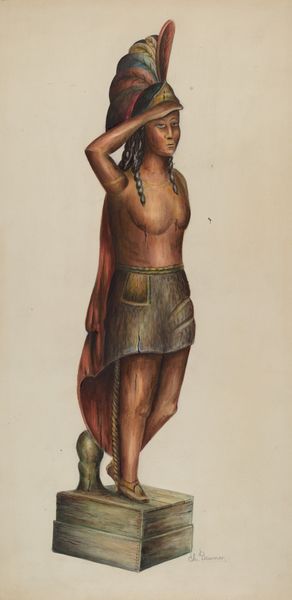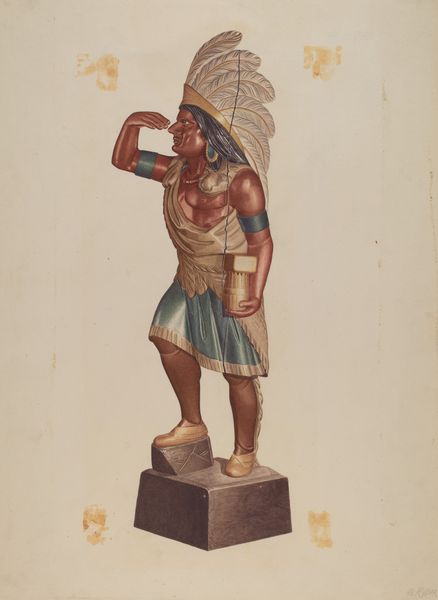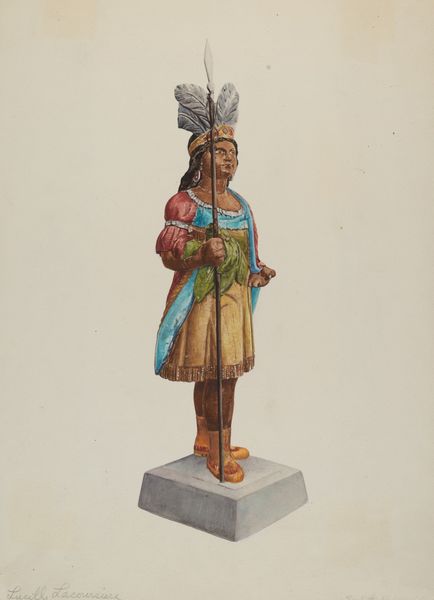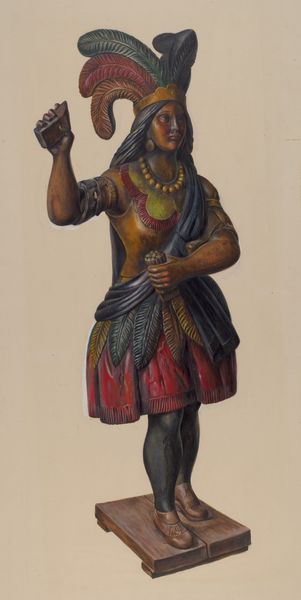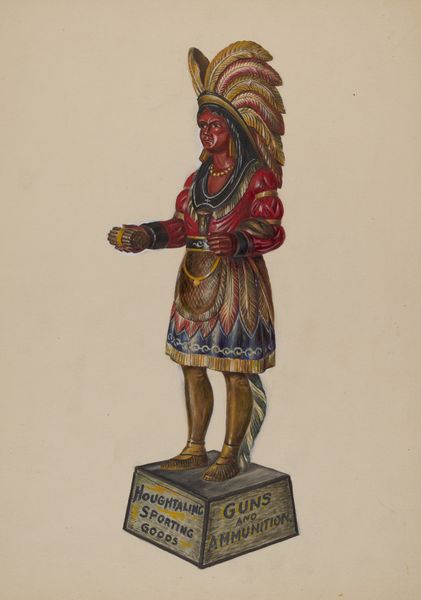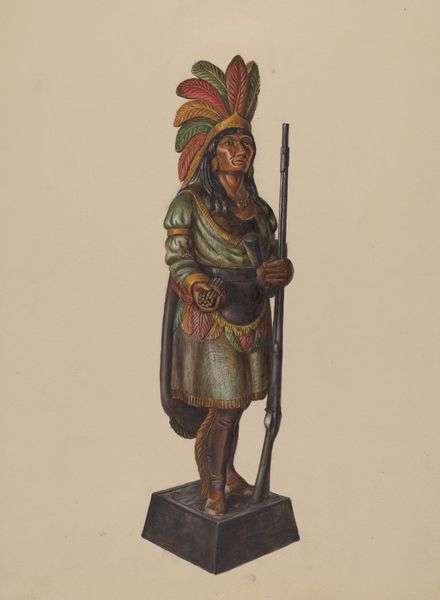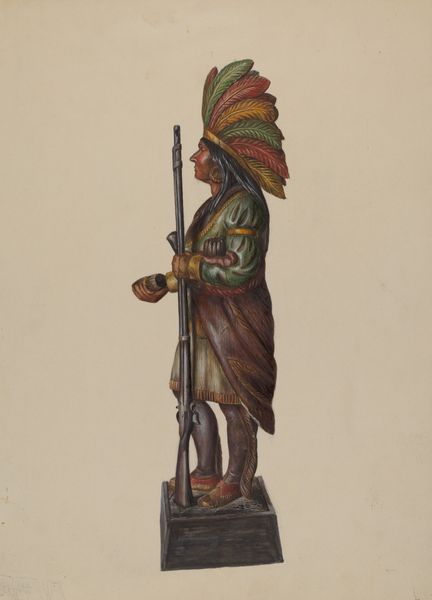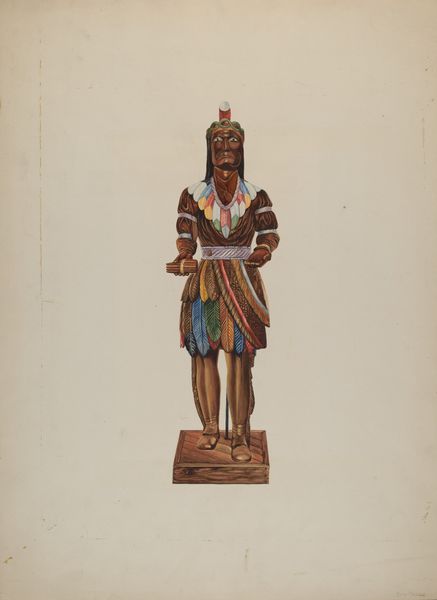
carving, sculpture, wood
#
portrait
#
carving
#
charcoal drawing
#
figuration
#
underpainting
#
sculpture
#
wood
Dimensions: overall: 40.6 x 29.2 cm (16 x 11 1/2 in.)
Copyright: National Gallery of Art: CC0 1.0
This striking figure, titled "Cigar Store Indian," was crafted anonymously, likely in the 19th century. Wood was the primary material. It was then carefully carved and painted. The process of carving, and in particular the choice of wood, significantly influences the artwork's appearance. Wood offers both malleability and durability. The artist has used these qualities to create a figure that feels robust and permanent, yet is full of intricate details. These figures were once ubiquitous, standing outside tobacconists across America. They functioned as advertisements but were also potent symbols of cultural appropriation. Their production involved skilled labor but exploited romanticized, often inaccurate, depictions of Native Americans for commercial gain. The "Cigar Store Indian" challenges traditional distinctions between fine art and craft. It asks us to consider the social context of making, and the complex relationship between art, labor, and cultural representation.
Comments
No comments
Be the first to comment and join the conversation on the ultimate creative platform.


